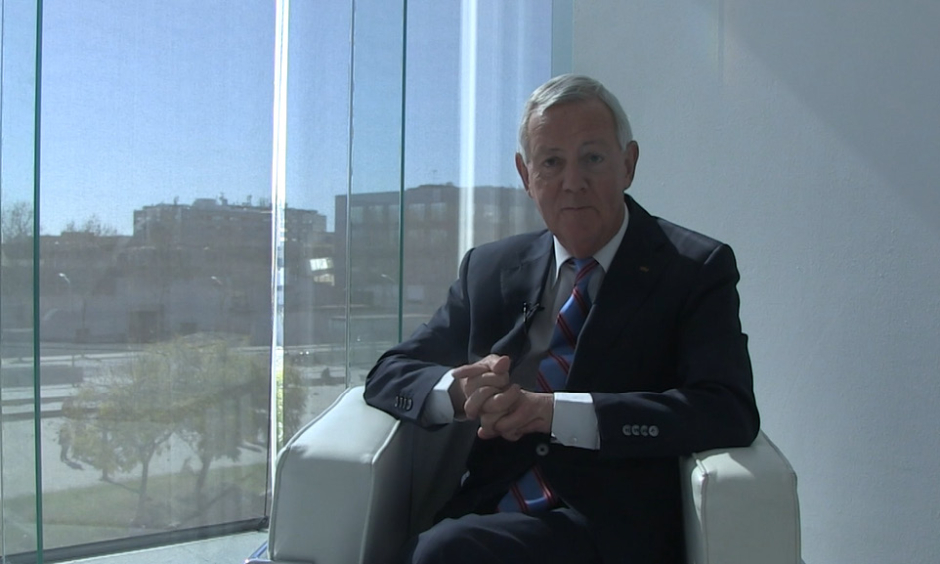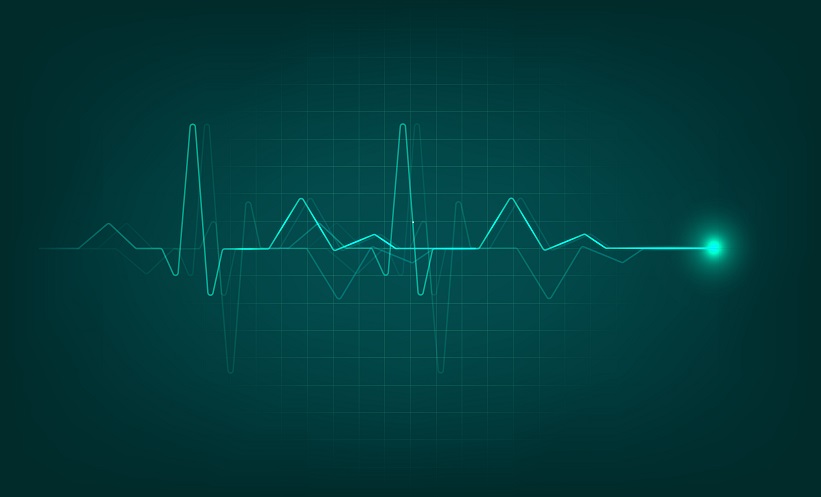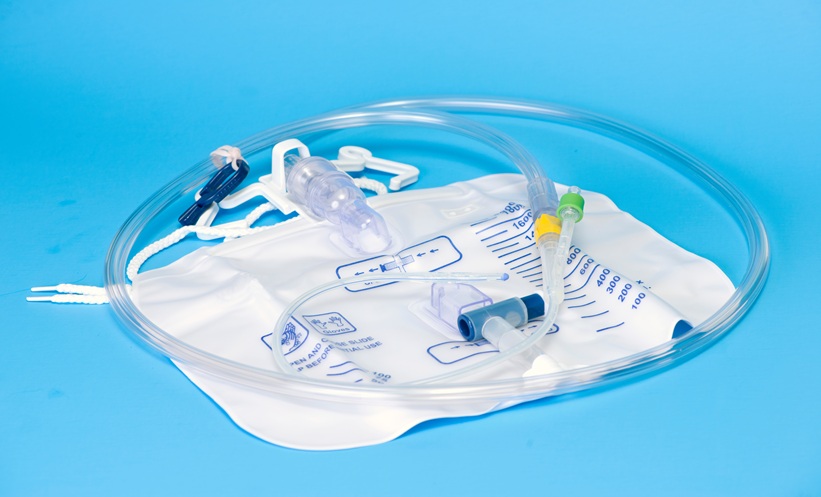Prof Dr Hendrik Van Poppel | Adjunct Secretary General of the EAU responsible for Education
![]()
At EAU 2019, it was our pleasure to meet with the venerable Prof Hendrik Van Poppel, the Adjunct Secretary General of the EAU responsible for Education, to discuss all things urology. This candid interview covers Prof Van Poppel’s extensive career, including the origins of many of his famous surgical innovations, as well as the import role he played in developing this year’s EAU programme. Whether you are seeking insight into the EAU’s development or the role of robotic laparoscopy in the future of urology, you need look no further than this world-renowned specialist.
You have worked within the field of urology for >35 years, how has the field changed since you first became involved and what is the most exciting advancement you have seen?
I started my career in urology in 1980, at a time when urology was mainly endoscopy, minor genital surgery, varicoceles, circumcision, stone retrieval with Dormia extractions, and transurethral resection of the prostate and of bladder tumours. Over time, we have become a major surgical discipline and developed big surgical techniques, such as cystectomies and urinary diversions. When I started in this field, if we had a diversion to perform, we would ask the abdominal surgeons to do it, but today urologists are handling vena cava thrombosis, retroperitoneal lymph node dissection, intestinal surgeries, and more. We began as endoscopists and very minor surgeons, became major surgeons, and now we are arriving in a minimally invasive surgical era with robot-assisted laparoscopy. Endoscopy is once again becoming more important. I would say this is the most important change in the last 30–35 years.
In 2017, the European Prostate Cancer Centres of Excellence (EPCCE) was developed as a result of numerous conference calls, emails, and the EAU Prostate Cancer Centre Consensus Meeting. How important do you believe programmes, such as the EPCCE, are to modern medicine?
Last year at the European Multidisciplinary Congress on Urological Cancers (EMUC) congress, we had the EPCCE consensus meeting, where we involved urologists, radiologists, radiation oncologists, nuclear medicine experts, patients, nurses, psychologists, and medical oncologists. We aimed to conclude just what a centre of excellence for prostate cancer should really stand for. The most important thing is the care for the patient, but secondary to this is education and thirdly the research. The centre needs to have the research and education facilities, and they should be able to offer all possible diagnostic and therapeutic options. This level of access is currently reserved for a happy few throughout Europe, around 15–20 centres. These centres will be the top stars in this field and, for research and co-ordinating research, it would be very nice to have a network of these centres of excellence for prostate cancer.
Is the example set by the EPCCE translatable to other cancers and diseases?
Beyond the initiative of the EAU, where we have involved many other disciplines, there are other initiatives too; they are not on the EPCCE, but on essential requirements. For instance, the Essential Requirements for Quality Cancer Care from the European Cancer Organisation (ECCO), which EAU has been working closely with, to define exactly what a European patient should receive when it comes to clinical cancer care. Is there psychological support? Is there the involvement of a multidisciplinary team? So, this is a completely different accreditation or recognition of centres and can be applied to other diseases, especially cancers.
You were recently involved in a study to identify the optimal candidate for salvage lymph node dissection for nodal recurrence of prostate cancer. What would you say is the take-home message from this study?
We are doing more and more aggressive surgery for prostate cancer. We stopped doing radical prostatectomies in low risk prostate cancer; these patients instead undergo active surveillance and maybe have surgery later. But where we do more surgery is in high risk prostate cancer patients, and we are also doing salvage lymphadenectomy in patients that, after a curative treatment (whether that is radiation or surgery), relapse in the lymph nodes of the pelvis. We are still not sure what the correct place for lymphadenectomy is. Does it really prolong the patient’s survival? Maybe not; we have not shown that yet. But if a patient relapses in the lymph nodes, what other treatment can we do? We can remove them, we can use radiation therapy, or we can give systemic therapy. This means we give androgen deprivation therapy. If we have a patient who relapses with steadily increasing prostate specific antigen (PSA) and we find disease in the lymph nodes using our new, very specific and sensitive diagnostic tools (such as PSMA PET/CT), we would avoid androgen deprivation therapy and use surgery instead. This would result in the reduction of PSA and everybody is happy; this may not impact on the overall survival of the patient, but it will certainly postpone androgen deprivation therapy. A number of these patients never relapse, so salvage lymphadenectomy may even be curative in some cases, but the majority do relapse.
In the end, all prostate cancer patients who die from the disease will be castrated (i.e., will have their androgens deprived) at a certain point in time, which greatly impacts quality of life. Thus, I believe that postponing the need for androgen deprivation therapy is, in and of itself, an argument for the use of these salvage procedures.
You are chairing the Renal Cell Carcinoma session at EAU 2019. What do you hope that attendees will learn as a result of this session?
This session that I will co-chair with Dr Grimm from Germany is on a variety of topics, the first of which is minimally invasive surgery. We believe that, today, if we can avoid giving the patient a very painful incision and perform procedures with minimally invasive tools, then this is much better, because the patient will experience less pain and will not experience late incisional complications. In expert centres, robot-assisted partial nephrectomy seems to be perfectly comparable to what we achieve with open surgery. However, there are limits and these are what Dr Kuczyk will try to highlight, showing that we cannot always propose laparoscopic robot-assisted partial nephrectomy in every complex case. I think the audience will learn that there are limits to minimally invasive treatments for renal cell carcinoma.
The second topic asks: ‘What is the place for ablative therapies for small renal masses?’ Ablation of renal masses has been proposed for frail patients who cannot undergo the usual treatment. Patients that cannot have active surveillance and cannot have major surgery can benefit from ablative therapy: radiofrequency ablation or cryoablation. The latter is more complex and difficult and mostly needs laparoscopic approaches, but radiofrequency ablation is a minimally invasive technique that works in frail patients and probably also in patients with small tumours detected via imaging. Without access to randomised clinical trials showing benefits to ablative therapy compared to conventional therapy, we need to further consider it as an investigational treatment that will be increasingly applied even without evidence-based trials.
The next point is on the neoadjuvant and adjuvant treatments. We know that we have had interferon, IL-2, and 5-fluorouracil administered to patients with high risk, where we believed that the final outcome of survival would be better if we give these drugs after the surgery in an adjuvant fashion (actually it did not improve the final outcome). There are also the tyrosine kinase inhibitors and the mTOR inhibitors. There may be a place for these drugs, but we still do not know which person might benefit from adjuvant and neoadjuvant treatment. Neoadjuvant use is now certainly a possibility in immuno-oncology drugs that have become available, and they seem to be effective in renal cell carcinoma as well. We will need to further explore which patient may benefit from neoadjuvant immuno-oncological therapies, i.e., which patient is at high risk for later developing metastatic disease and may profit from these therapies. Dr Mir Maresma will give the latest update on which evidence is available today.
You developed a number of original surgical techniques, including the prepubic urethrectomy, percutaneous gastrostomy, lumbal splenectomy during orthotopic kidney transplantation, and of the Leuven ‘N’ pouch for bladder substitution. What led you to develop these techniques? What impact has your work had on the patient experience both during and after surgery?
I have indeed developed a number of surgical techniques that might carry my name, for instance the prepubic urethrectomy, and why I developed that technique is a funny story. I was a resident in urology. My professor was doing a cystectomy and was doing a diversion and it took him 4–5 hours to do the procedure. Then he said: “Van Poppel, now you do the urethrectomy.” This meant I had to close up the patient, reinstall the patient in the lithotomy position, make a perineal incision, and take the urethra out prophylactically in patients that had a high risk of urethral recurrence. I was already tired myself and then I thought maybe we can get that urethra out through another approach. Therefore, I prolonged the incision over the pubis, luxated the penis inwards, and did a prepubic urethrectomy without reinstallment of the patient. It turned out that it took just 20 minutes more, not half an hour or 1 hour longer, and it was safe. We had to cope sometimes with haematomas, but in the end the procedure as we do it today does not prolong the procedure. The patient has no pain perineally so it certainly has advantages.
The second procedure is the percutaneous gastrostomy. We know that patients in the postoperative period can vomit and can have gastroparesis. They can have paralytic ileus and then they are very uncomfortable with a nasogastric tube that needs to stay in place until the bowels start moving again. In this area today, we have early recovery after this important surgery with the ERAS protocol, but, at the time when I was trained, I hated having this tube in my patient’s nose. We tended to remove it as soon as possible after the surgery because it was so unpleasant. Although I did not invent it (I have seen other surgeons, like Richard Turner-Warwick, putting tubes in the upper gastrointestinal tract), what I did at the end of the procedure was inflate the stomach with air with the help of the anaesthesiologist and then put a bladder catheter into the stomach via puncture; it was left there until the patient was developing transit again and was removed after the patient had a normal breakfast without any complications such as peritonitis. So, I felt this was much more comfortable than the nasogastric tube. As I said, with the EUS protocol we have today, there is not too much indication to do this technique any longer unless the patient really needs to have an empty intestinal tract for several days.
Finally, there’s the ‘N’ Pouch, which is simply a mixture between the Studer Pouch and the Hautmann Pouch; it’s simply an ‘N’ pouch with an afferent limb. It’s very fast. It doesn’t take more than 1 hour. It is uncomplicated. It is a simple, termino-lateral insertion of the ureters on the afferent limb, like in the Studer pouch, and it is a very easy and fast procedure, which has been updated to include the results of >200 people.
In 2012, you held the position of EAU Adjunct-Secretary General. What was your greatest achievement in this role? If you held the role currently, upon which areas of urology would you focus the attention of the EAU Congress?
Since 2012, I have been the Adjunct-Secretary General and was responsible for education in the EAU after having been the director of the European School of Urology for 8 years prior. Education, in my opinion, is one of the most important tasks of the EAU. Education is at the heart of everything the European School of Urology is doing today at this congress. We have 55 courses, which are extremely well attended, mostly by younger urologists, on all the different topics that urology encompasses. Besides this, we have European School of Urology (ESU) courses at the national congresses of many countries; they ask us (two or three of the ESU faculty) to come and teach them. We have educational events at any meeting that the EAU is organising, whether this is on lower urinary tract symptoms, renal cell carcinoma, or prostate and bladder cancer. We also have educational events at the European Multidisciplinary Congress on Urological Cancers (EMUC) that we organise every year together with the European Society for Radiotherapy and Oncology (ESTRO) and the European Society for Medical Oncology (ESMO). There is hands-on training and training on MRI reading, as well as the training of radiation oncologists. So, we have a very important educational platform, not to mention a range of online education. I think the ESU today, under the guidance of John Palou, Barcelona, Spain, has become really tremendous and is a fantastic tool for education.
As someone who has worked in urology for >35 years, what advice would you give to someone who is just starting out?
After working in urology for >35 years, I would say to a young colleague that they have made the best choice. Urology is a wonderful profession and not only because it includes surgery. This is what the youngsters should absolutely know: the place of surgery, certainly in oncology, will not continue to increase, but it will decrease. Why? Simply because we have better medical treatments and radiation treatments than in the past. There are medical treatments that urologists have always been prescribing. We have always been treating infectious diseases, as well as lithiasis. We have always been doing androgen deprivation therapy and giving anti-androgens. We have been giving intravesical treatment with the cytostatic agents. So, urology is not only surgery and I would advise the younger ones that this is very important. There is not only surgery and there is not only robotic surgery, which attracts so many young people to urology. Do not forget that medical treatment of urological diseases, be they malignant or benign, is so important. We are not just surgeons. We are not doing surgery for an internist who indicates which patient should have which procedure. Rather, we see the patient for screening, for diagnosis of his disorder, we do all the endoscopic manoeuvres in diagnosis and treatment, and then treat the patient, not only with surgery but with drugs, with cytostatic agents, with immuno-oncological agents that recently became available, with targeted therapies… So, the frame of urology is much larger than just surgery and that would be my strongest advice to the young urologist. Do not forget this, because medical treatment will increase and will become more and more important in the care and cure of urological patients in the future.








